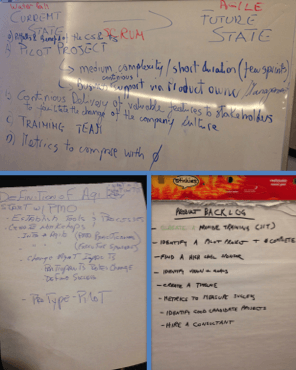Project Managers are Change Masters

This is an exclusive post from Jesse Fewell. You can find more posts by Jesse Fewell on this site, or on his own blog.
Project Managers get a bad rap. Many times, when we hear “project manager”, we think of the middle-aged man who either can’t cut it anymore technically, or that woman who is little too bossy for her position, or the self-important young guy angling for a promotion. Granted, many PMs are placed into leadership roles without having the requisite soft skills to be successful. However, there is one thing that has remained a positive constant with any good project manager I’ve seen: change management.
I once heard a speaker at the annual PMI Global Congress in North America say “Project Managers are change masters. We lead teams and organizations from current state to future state”. For the life of me, I can’t remember the name of the talk or the speaker. But his one closing line stuck with me. (Sidenote: if you’re that Congress speaker, please let us know by posting a comment below). I *love* this quote, and I’ve used it to kickstart an activity in the agile classes I teach to project managers. It goes something like this:
“Okay, PMs. You’ve reached the end of two days of agile training. When you go back to the office, you will be faced with the status quo of bad quality, late projects, and burned-out teams. You are change masters. You will be charged with leading us from current state to an agile state. In your groups, design a agile transition plan.”
I’ve done this about a half-dozen times now with classes specifically offered to PMI Chapters across the country, and the outputs are amazing. Here is a list of some of the things proposed by these much maligned project managers:
- Find an executive champion
- Use an Agile process to roll out your agile process, using monthly or quarterly iterations
- Have your agile expert be the Product Owner, leading a dedicated transition team, and reporting to senior stakeholders
- Craft an Agile Adoption Backlog, consisting of things like: training, an agile pilot project, a list of organizational roadblocks
- Focus on thin vertical slices of the organization, just like you would with potentially shippable product increments
- Implement both process metrics (% teams transitioned) and business metrics (stakeholder satisfaction) to measure progress

Sampling of Agile Adoption Plans created by Project Managers
In case you didn’t notice, this is eerily similar to the kind of guidance you might get from an agile expert. I’ve been at agile conferences where audiences swooned at a keynote speaker recommending essentially the same things. But these plans are produced by professionals who have little to no experience working with agile techniques. Interestingly, this exercise does NOT work very well with a room full of engineers or analysts new to agile concepts. Instead, it’s the PMI groups that have the most success with applying their new agile training to change management.
Of course there will still be project managers out there that resist your move to modern management practices. But the next time you come across one of those project managers, pull them into the conversation and challenge them “How would you transition us to the future state we want?” You just might be surprised as the results.
How about you? Have you ever worked with a Project Manager that was really good at Change Management?

